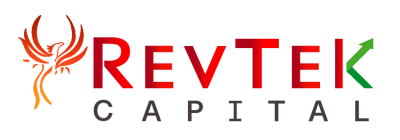A recent report from the Synergy Research Group indicates that the software-as-a-service (SaaS) market generates approximately $100 million annually. They anticipate that this market will grow by nearly 30% each of the next several years. An estimated 51% of organizations currently have “most” of their operations running on a form of SaaS application, and 38% “entirely” run on these products.
Understanding SaaS
The U.S. Department of Commerce has a division known as the National Institute of Standards and Technology. They explain that SaaS provides the customer with the use of an application on a cloud infrastructure. Access to the applications is commonly through a web browser, client interface, or program interface. The consumer generally has no direct control over or any need to manage the infrastructure.
One advantage for the consumer is that they are not responsible for installing or running applications in-house. One exception is when the consumer controls settings related to “user-specific” configuration. This allows them to eliminate the costs of acquiring and maintaining hardware and software such as licensing and support.
SaaS Market
Currently, within the market, there are three general categories of vendors. These include “traditional” enterprise software vendors, many newer “born-in-the-cloud” organizations, and IT vendors now expanding into software markets. The industry is primarily structured into vertical markets with customized industry-specific features.
Overview of Customer Lifecycle
The SaaS customer lifecycle can be broadly separated into three phases as follows:
- Acquiring a customer: Involves attracting a prospective customer by creating value. The goal is for prospective customers to recognize the value of the product and how it serves as a solution for their needs.
- Engagement with the customer: This phase is where a prospective customer becomes an actual customer. It involves interaction will the buyer, the sales process, and much more that will be detailed further.
- Retention: The ability of an organization to retain its existing clients is important in SaaS. Retention is critical as SaaS companies are often reliant on future recurring revenues.
These phases are often described in other related terms; however, the principles are broadly similar. We will progress through the many subsections or steps of the process in detail. SaaS companies struggling to grow should continually evaluate and improve their practices and strategies to maximize success.
1. Awareness
Potential customers may or may not know they have a problem you can solve. Today’s emphasis is on attracting attention and generating interest through various channels. Creating educational content and useful resources may lead a prospective customer to your site.
Other key promotional tools employed today include video content and social media optimized for search engines like Google. When a visitor feels that you educate, entertain, or potentially provide worthwhile solutions, they may engage. They may provide their contact information by subscribing to your blog newsletter or filling out a product inquiry form.
2. Consideration
At this point, the potential customer can be best described as a lead. They have recognized an offer or determined that you are valuable to them and their organization. Nurturing a lead is critical in this phase. A member of your customer service or sales team may reach out to them.
This phase may or may not begin the sales process. The marketing and sales teams should maintain communication. Are you attracting the right audience? Are your marketing strategies attracting leads that are qualified or appropriate for your sales team to pursue? These are critical factors because marketing efforts may be costly.
3. Potential Trial Period
This is a critical phase because it is often the point where a lead continues to escalate through the sales process or is lost. It is common in software sales to transition a lead to try your products on a “free-trial” or “freemium” basis. This tends to be a short-term opportunity for the lead to engage with your product in some limited manner. The goal in this phase is to expose the lead to your product and demonstrate that it has value to them. It may involve a demonstration of your product.
4. Qualification
If the potential customer believes your product would benefit them, there is a qualification period. They may continue exploring the software and researching it online. The lead may engage a salesperson during this phase (or vice versa), and the potential customer may investigate competing products when applicable. From the potential customer’s perspective, this may be considered a “feasibility” period.
5. Evaluation
Many actions and interactions may overlap with the qualification phase during the evaluation phase. The difference is that the potential customer is likely to have others in their organization assess the product and is likely to ask more detailed questions. At this point, the sales process is in full swing, and critical considerations may be made regarding how the product may or may not integrate with other tools they use.
6. Negotiation or Conversion
During this phase, the potential customer is preparing to purchase. If there was a trial period, can they be converted to a paying customer? Are there any lingering objections that must be overcome or any unanswered questions? There may be negotiating on prices, clarifications needed on terms or conditions of agreements, and, hopefully, a sale.
7. Implementation
The process of implementation may broadly transition away from the sales team. Depending on the complexity of the product, other potential people that may become involved include a sales engineer, IT staff, customer service and support, and others. The “onboarding” process should be closely managed to ensure a smooth transition.
8. Building Customer Satisfaction
After the installation, ensuring the customer is satisfied and things are going smoothly becomes critical. Software vendors recognize that securing a new customer often takes significant time, expenses, and other resources. Efforts toward customer satisfaction reduce the potential for “churn.” This is a term that describes losing an existing account.
The individual(s) from the customer’s organization involved in the sales process may or may not use the product regularly. For example, perhaps the software solution is used exclusively by sales, marketing, and customer service professionals. Good communication and customer support continue to be necessary. These day-to-day users may begin to provide feedback to their management-particularly when they are not satisfied!
9. Renewal (Potential Upsell or Cross-selling)
Depending on the terms of the agreement, there may be a date that the subscription terminates and needs to be renewed. In many cases, the sales team may be involved, particularly if the cost of the product will be rising. There are a host of potential factors that may impact this critical phase, including:
- The customer’s level of satisfaction with the product
- The current perception that the customer has regarding the value. Does the product still provide a solution that justifies the expense?
- Other potential competitive or alternative products
- The effort and resources needed to transition away from your product to another, and more
10. Different Existing SaaS Pricing Strategies
If an existing customer is on a usage-based or per-active-user model, it may be possible that other departments, divisions, or offices may adopt the product. This would increase the revenue generated from the account.
Remember that this phase of the customer lifecycle also may create opportunities. It may be an opportunity to engage the organization’s key decision-makers on possibly purchasing other products and upselling. Perhaps you have recently introduced an enhanced enterprise version of the product they currently use?
Generating Referrals
Another great benefit to maintaining high satisfaction levels among your existing SaaS customers is that they may be a referral source. A satisfied customer may become an excellent source of new potential clients simply through word-of-mouth with other organizations. You also may consider approaching the customer about providing a testimonial or being featured as a case study.
Providing Capital for SaaS Company Growth with RevTek Capital
RevTek Capital provides strategic debt funding of $3MM to $30MM to innovative companies with $7MM to $75MM of predictable annual recurring revenue. The funding is used for sales growth, acquisitions, and enhancing infrastructure for scaling operations. Each company’s debt structure is customized to optimize its unique accomplishments and circumstances.
Many startup companies struggle to raise capital and have found the process to be quite time-consuming. Our organization has unique insights regarding SaaS businesses and the challenges these and other tech-enabled companies encounter. In addition, the professional team at RevTek has many years of experience in marketing and operations that may assist our clients.
Key Benefit Summary
- Cost-effective capital for growing tech-enabled companies
- The company leadership retains control
- Recurring revenues serve as the collateral for financing
- Repayment is structured into simple and manageable monthly payments
- You have faster access to funding – closing in as little as four weeks
We look forward to the opportunity to partner in growing your business!
Contact us Today!



